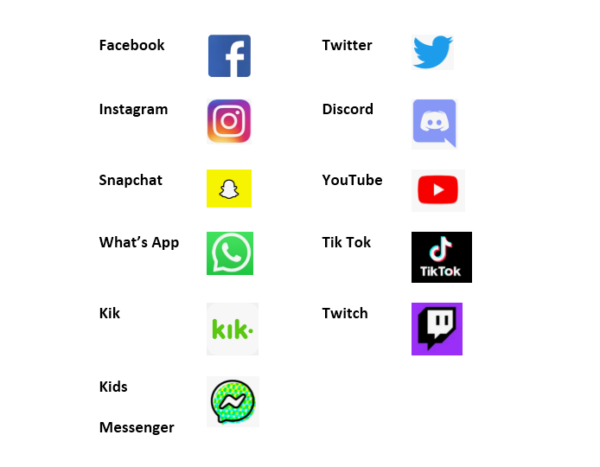By Peta Maynard, Clinical Psychologist, Youthrive
The most recent statistics on the prevalence of childhood sexual abuse revealed one in six women, and one in ten men experienced abuse before the age of 15 (Australian Bureau of Statistics, 2017). In 2020, the Australian Centre to Counter Child Exploitation (ACCCE) triaged more than 250,958 child abuse material (2021).
Recent findings by the ACCCE (2020) flagged child exploitation preventative measures are “reactive and inconsistent” and greater education and awareness for families was required to help keep children and young people safe.
The idea of a person who sexually abuses young people as being the “dirty old man” is a myth. In fact, anyone can sexually abuse a young person, and often the perpetrator is someone the young person and parent(s)/carer(s) know. Whilst the topic of child exploitation is uncomfortable and/or distressing for many, it is important to be aware and look for behaviours in children, adolescents, and adults that may indicate grooming behaviour and child exploitation.
What is grooming?
Often, individuals who sexually abuse children engage in a grooming process. However, not every child who is sexually assaulted will have been groomed.
Grooming is a process which typically occurs over a period of time (months or even years), where a person will gain insight into the emotional needs of a young person, increase their access to the young person, and prepare the young person for sexual activity. Throughout the grooming process, a person will use strategies to build trust from the young person, as well as any surrounding adults.
Grooming tends to occur through the following stages:
- Identifying emotional need and building trust; this includes getting to know the young person and those around them. Providing the young person with attention may make the young person feel special or attended to.
- Use of rewards; Gift giving tends to involve giving the young person gifts of things they are interested in, such as toys, money, dolls, online game credits etc.
- Keeping secrets; a person might begin to test whether the young person is able to keep secrets. This may initially start as keeping small secrets (e.g. being given an extra bowl of ice-cream) and gradually increase in severity.
- Touching; touching usually begins with finding opportunities to touch the young person in non-sexualised ways, such as ticking, wrestling, piggyback rides. Touching then becomes more sexualised over time.
- Exposure to sexual material; this may include openly or pretending to accidentally expose a young person to sexual material and/or sexual acts and seeing how the young person responds.
- Manipulation and control; the groomer may encourage a young person to engage in behaviours that are dangerous or against the law and force the young person to do sexual favours in return for not being exposed.
Grooming can occur in both online and offline environments. Online grooming can occur through games, social media, live streaming platforms, chatrooms and messenger applications. Below are some popular platforms to be cautious of:

Grooming may look like:
- Unexplained gifts, online game credits, money.
- Asking adults or young people for photos and/or videos
- Asking a young person for a favour.
- Giving compliments or making the young person feel special.
- Persistently seeking out the young person.
- Making threats.
- Manipulating the young person to do things.
- Asking to keep a secret.
- Unusual/helpful requests that provide 1:1 time that may appear helpful e.g. helping with bath time, offers to babysit, reading a bed time story.
Things to be aware of:
- An adult or older person may show an increased interest in your child’s activities and wellbeing.
- Talking about new friends who don’t belong to their usual friendship group.
- The young person or adult may become secretive with their activities and defensive when you question them.
- The young person may not want to disclose where gifts came from.
- Spending an increased amount of time in one’s room or online.
- The young person talks a lot about an adult or older person. You might also notice an adult or older person talking a lot about the young person as well.
- Young person is receiving a lot of messages from someone they only know online.
- Making sexual comments or jokes to a young person.
- Persistently intruding on a young person’s privacy.
What can I do?
- Increase your own understanding of child sexual abuse and grooming.
- Use parental restrictions on technology, check privacy settings, and be aware of the applications being used. Create an online safety agreement with your child or adolescent.
- Have conversations with your child/ren and adolescent(s) about private parts and use correct anatomical language when talking about private parts. Conversations about personal safety should be ongoing and not a one-off conversation.
- Set boundaries with family members and friends. Boundary setting may look like “in this house we play with the door open” or “we don’t tickle in this house”.
- Discourage secret keeping.
- Speak to a clinician about linking your child into a Personal Safety Education (PSE) program. PSE empowers young people by providing age-appropriate information and skills. PSE teaches children about their emotions, assertiveness skills, and that their body belongs to them. PSE also builds the support system for a child.
- If you become aware of grooming or child exploitation, it is important you report this to Police and your state or territory’s Child Protection agency. Even if you have stopped a young person from interacting with someone you believe to be grooming, this does not mean other young people aren’t at risk.
- If a child is in immediate danger, contact 000, Crimestoppers 1800 333 000 or contact your local police.
Further reading:
- https://www.thinkuknow.org.au/
- https://kidshelpline.com.au/parents/issues/understanding-child-sexual-abuse
- https://raisingchildren.net.au/school-age/safety/online-safety/grooming-signs
- https://parentingsafechildren.com/resources/
- https://www.education.vic.gov.au/school/teachers/health/childprotection/Pages/expolitationgrooming.aspx
- https://bravehearts.org.au/what-we-do/education-and-training/for-parents/resources-for-parents/
References:
Australian Bureau of Statistics. (2017). Personal safety: Statistics for family, domestic, sexual violence, physical assault, partner emotional abuse, child abuse, sexual harassment, stalking and safety.
https://www.abs.gov.au/statistics/people/crime-and-justice/personal-safety-australia/latest-release
Australian Federal Police. Online child sex exploitation. https://www.afp.gov.au/what-we-do/crime-types/child-protection/online-child-sex-exploitation
Australian Centre to Counter Child Exploitation. (2021). News and Media. https://www.accce.gov.au/
State Government of Victoria. (2019). Child sexual exploitation and grooming. https://www.education.vic.gov.au/school/teachers/health/childprotection/Pages/expolitationgrooming.aspx









